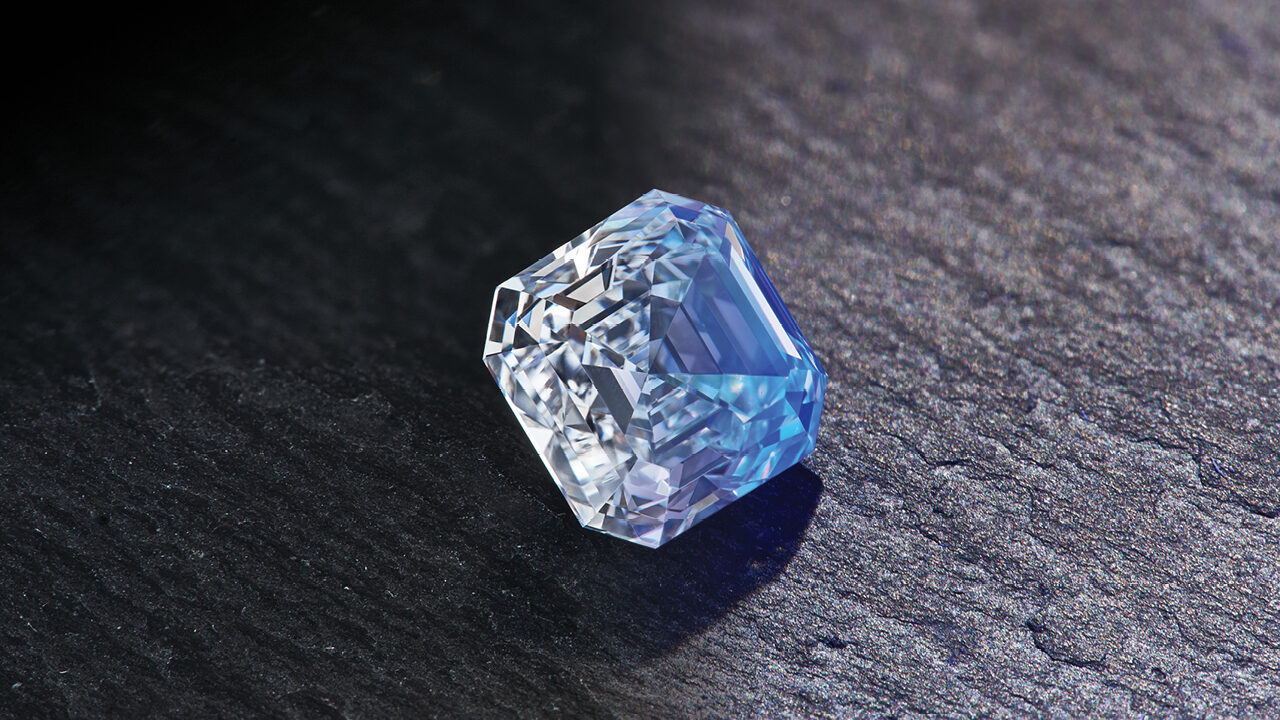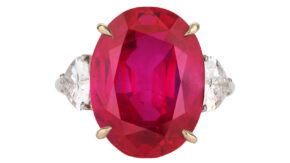Misinformation and a series of events has seen the diamond trade undervalue the phenomenon of fluorescence.
Fluorescence in a diamond used to be viewed as a desirable trait. Diamond dealers would actively seek out near-colorless stones with strong blue fluorescence as they believed it made these diamonds appear more colorless and therefore brighter under light containing ultraviolet (UV).
When a large quantity of these diamonds were uncovered at the Premier mine in South Africa, it gave rise to the term “premier” to describe light-yellow diamonds with strong blue fluorescence. Similarly, the term “jager” referred to diamonds from the Jagerfontein mine, also in South Africa, which produced a high proportion of colorless stones with strong fluorescence.
These diamonds were known as “blue-white” (blauweiss) and commanded a higher price because of the prevailing belief that fluorescence added value to higher color diamonds.
However, the positive associations connected to the term “blue white” began to be eroded when the trade started selling lower-color diamonds under the “blue-white” label. This eventually led the Federal Trade Commission (FTC) in 1938 to ban the term “blue-white” in diamond marketing.
Other historic developments also contributed to the discounting of fluorescence.
NEGATIVE VIEWS
In the boom market of the 1970s, some dealers were offering substantially lower prices for what they called “milky Ds,” or Ds with strong blue fluorescence and reduced transparency, according to a GIA report. This negative view of fluorescence gradually spread to lower colors, and even to stones in which the fluorescence was weak.
Matters were made substantially worse when it was revealed labs in South Korea were over-grading the color of fluorescent stones in the early 1990s. Local consumers suddenly realized their stones were over graded and not only stopped buying fluorescent stones, but became active sellers.
Around the same time, a large volume of goods containing fluorescence started coming onto the market, mainly from mines in Russia, and this increase in supply in turn negatively impacted price.
Nonetheless, fluorescent diamonds still remain in the minority, with the GIA estimating they account for 35% of global supply.
SIGNIFICANT OPPORTUNITY
Studies, by the likes of the GIA, have shown the jewelry-buying public see no difference between diamonds with fluorescence and those without. Indeed, the trade could be missing out on a significant opportunity. Savvy diamantaires and jewelers are buying fluorescent goods and marketing them as a specialized product.
Considering that the industry needs an avenue for offloading its fluorescent diamonds, it should be encouraging initiatives like these.
Image: Alrosa




